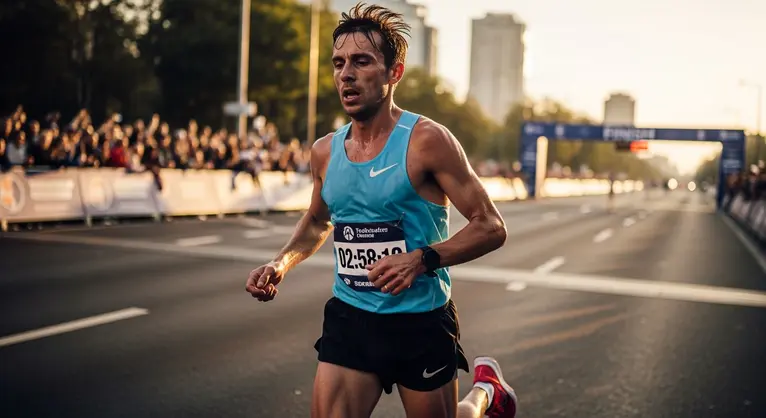Recovery & Injury in Adaptive Sports: The Complete Guide for Every Athlete
Whether you’re new to adaptive sports or a seasoned competitor, preventing and recovering from injury is key to long-term success, joy, and independence. Recovery isn’t just about bouncing back—it’s about coming back stronger, smarter, and more resilient. In this guide, you’ll discover the essentials for staying healthy, reducing downtime, and thriving in your sport, no matter your experience level.
Common Injuries in Adaptive Sports
Adaptive athletes face unique physical demands, often compensating with specific muscle groups or using specialized equipment. This can lead to:
- Overuse Injuries: Shoulders, elbows, and wrists are hot spots, especially for wheelchair users and those using assistive devices.
- Acute Injuries: Falls, collisions, and hardware mishaps can result in fractures or concussions. Bone density issues, especially in athletes with spinal cord injuries, add risk.
Real-World Example: A wheelchair basketball player may push hard during a game, putting extra strain on the shoulders—making proper conditioning and awareness crucial.
Prevention Strategies: Your Injury Shield
Most injuries can be prevented by smart planning, training, and routine checks. Here’s how:
- Equipment Fit: A well-fitted wheelchair or prosthetic isn’t just a comfort thing—it redistributes pressure, enhances performance, and shields against injuries. Think of it as custom tailoring for your athletic life.
- Technique and Coaching: Regular coaching corrects movement patterns, helps you avoid compensation injuries, and keeps your form in check.
- Health Monitoring: Annual check-ups and, for some, bone density scans, can catch problems before they become serious.
Practical Tip: Schedule routine equipment assessments—an expert check is as vital as an oil change for your car.
Recovery Best Practices for Beginners
If you do get injured, a stepwise, individualized rehabilitation plan is your fastest ticket back to sport.
- Multi-Disciplinary Rehab: Team up with physios and sports docs familiar with adaptive needs.
- Gradual Progression: Start slow, listen to your body, and ramp up activity mindfully.
- Holistic Focus: Address both the injury and any secondary issues related to your disability.
- Tracking: Use journals or apps to monitor progress and symptoms during rehab. For additional guidance, consider using an injury recovery checklist to ensure comprehensive care during your rehab journey.
Beginner’s Mindset Advice: Every recovery journey is personal—don’t measure your progress against others, but focus on your own milestones.
Nutrition for Rapid Healing
What you eat can speed your healing process or slow you down. Here’s what to focus on:
- Protein Power: Supports muscle repair. Lean meats, beans, and plant-based options work well.
- Anti-Inflammatory Foods: Berries, leafy greens, nuts, and fatty fish reduce inflammation.
- Bone Builders: Calcium and vitamin D—especially important if you’re at risk of osteoporosis. Learn more about the importance of calcium for bone strength to support your recovery.
- Micronutrients: Zinc (nuts, seeds) and vitamin C (citrus, peppers) boost tissue repair.
Simple Strategy: Plan meal prep around healing goals—think colorful plates with protein at every meal.
Tools, Gadgets, and Technological Support
Modern technology delivers a performance (and safety) edge:
- Adaptive Equipment: Adjust wheelchair camber for stability or fit your prosthetics with pressure-distributing pads.
- Smart Wearables: Devices and apps that track movement or provide biofeedback are game changers for independent rehab.
- TIPAS Platform: An evidence-based, individualized injury-prevention tool that adapts to your sport and physical status, advancing as you do.
Example: A handcycle athlete uses a smartwatch to monitor overuse signs and an app for guided stretching routines—blending data with daily action.
Psychology & Motivation During Rehab
Injuries can take a toll on your mood as much as your body. Staying motivated is half the battle.
- Goal-Setting: Set clear, achievable recovery goals—small wins build confidence.
- Visualization and Positive Self-Talk: Picture your return to sport and speak kindly to yourself. Techniques like visualization for healing can significantly boost your mental resilience.
- Community Support: Peer networks, adaptive sports clubs, and coaches provide crucial encouragement.
Real Talk: It’s natural to feel frustrated; channel that into determination and proactive rehab. Remember—you’re not alone.
Key Takeaways: Holistic, Continuous Progress
Preventing and recovering from injury in adaptive sports isn’t just about quick fixes—it’s a holistic, ongoing journey. Focus on these essentials:
- Get the right equipment and training.
- Monitor your health and recovery.
- Fuel your body to heal.
- Embrace new technology and community for support.
- Invest in your mental resilience.
By taking a proactive, evidence-based approach, you can stay active, reduce downtime, and get back to what you love—with more strength and knowledge than before.
Stay strong, stay motivated, and keep moving forward—your best athletic days are ahead!

